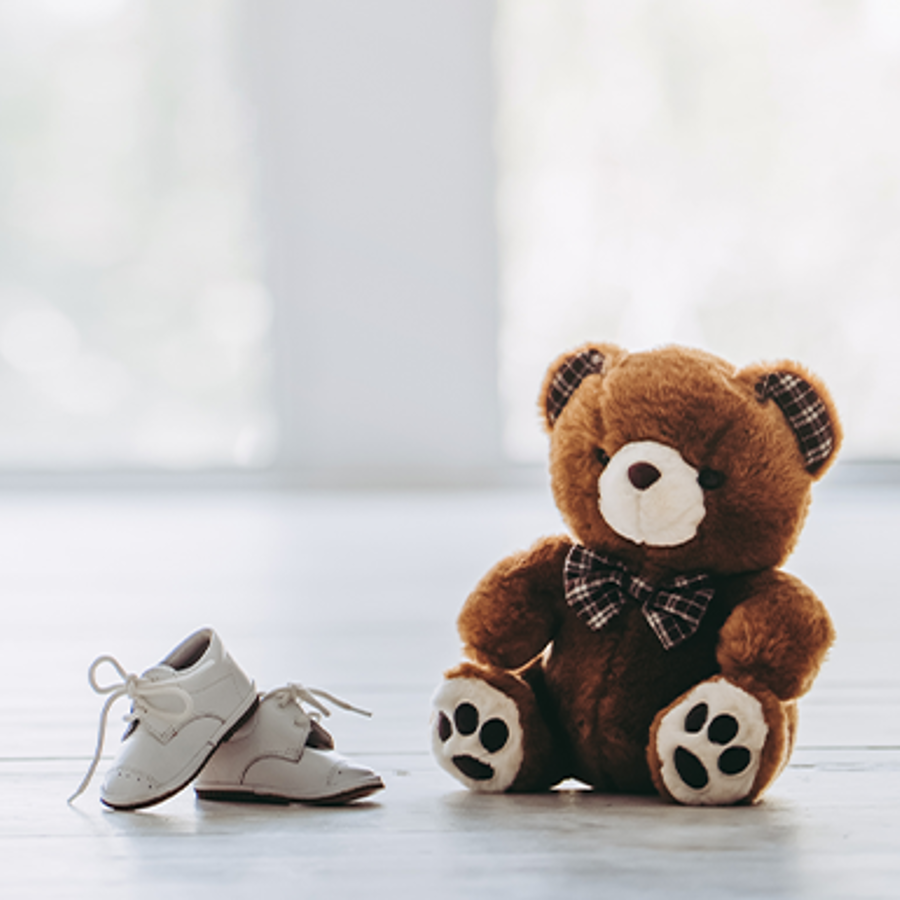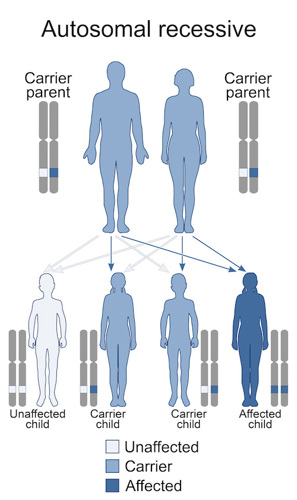
What are the genetic risks of two siblings having a child together?
December 12, 2007

- Related Topics:
- Intermarriage,
- Dominant and recessive,
- Carrier
A curious adult from Texas asks:
“Incest laws seem to be socially rather than genetically based, but I’m guessing there are biological consequences too. So what are the exact genetic risks of two siblings having a child together?”
You're probably right that many incest laws are socially rather than biologically based. This is certainly the case in ones that forbid first cousin marriage.
Many cultures encourage first cousin marriages and their kids seem to be pretty safe. Recent studies have shown that the risk for first cousins to pass on diseases is only 2-3% higher than for unrelated people.
But there is definitely good biology behind the laws that prohibit brothers and sisters from having children. The risk for passing down a genetic disease is much higher for siblings than first cousins.
To be more specific, two siblings who have kids together have a higher chance of passing on a recessive disease to their kids.
To explain "recessive", we need to remember that we have two copies of most of our genes -- one from mom and one from dad. And these genes can come in different versions (also called alleles).
Recessive means that both copies of a gene need to be the same version for it to have an effect. Common recessive traits are red hair or blue eyes. Common recessive diseases are cystic fibrosis and sickle cell anemia.
Copies of genes that do not work well (or at all) can cause recessive diseases. But usually they only cause the disease if both copies of a gene don't work. You only need one working copy because it can compensate for the copy that doesn't work.
All of us have some recessive disease genes. But we usually have a second, working copy of that gene to make us healthy. When you have one normal copy and one disease copy of a gene, you are called a "carrier" of the disease. Carriers don't show signs of the disease, but they can pass the disease version of the gene to their kids. However, BOTH parents must be carriers in order for their children to have a chance of getting the disease.
There are many different recessive diseases and they tend to be rare. What this means is that two unrelated parents are most likely carriers of different disease genes from each other. If they have kids together, the kids will probably get at least one good copy of any one of those genes. And so the kids are unlikely to get those diseases.
On the other hand, siblings are very closely related. So they are much more likely to be carriers of the same diseases. And their kids are more likely to get two broken copies of those genes and end up with the disease.
But how much more likely? It turns out that two siblings are 50% related. This means that for any given gene there is a 1 in 4 chance that they have the same copy as each other.
Say their dad (but not their mom) is a carrier for a harmful disease such as cystic fibrosis (CF). So dad has one broken copy of CFTR, the CF gene. This means that the brother and sister have a 25% chance of both also being carriers.
If the brother and sister are both carriers and have a child together, then each of their children would have a 1 in 4 chance of ending up with CF by getting a disease copy of CFTR from each parent. So the odds of this brother and sister having a child with the disease is (1/4)(1/4) or 1 in 16.
Now imagine that dad is a carrier but that his kids go on to have children with unrelated people. What are the odds that these grandkids will have CF? Around 1 in 240.
We can calculate this number because we know how likely it is for any random person in the U.S. to be a carrier of CF--around 1 in 30. We also know that because dad is a carrier, each of his children has a 1 in 2 chance of getting the disease version of the CFTR gene. So the odds that both parents would be carriers is (1/2)(1/30) or 1 in 60.
The chances that both of these parents would then pass on the disease version of CFTR is the same 1 in 4 that we talked about in our previous example. So the chances are (1/4)(1/60) or 1 in 240.
So the difference between our two examples is 1 in 16 vs. 1 in 240. The siblings are 15 times more likely to have a child with CF than if they had had kids with an unrelated person. The risk becomes more pronounced with more rare diseases.
Imagine a really rare disorder like complete achromatopsia, or total color blindness. Somewhere between 1 in 20,000 and 1 in 50,000 people have this disease. This translates to around 1 in 100 people being carriers.
If we use the same example where dad is a carrier for the disease gene, then the chances for two siblings having a child with the disease are the same, 1 in 16. But the risk for one of these kids and an unrelated parent falls to 1 in 800. So the siblings have a 50-fold higher risk!
The reason I chose this particular condition is because there is an island in the Pacific where around 5-10% of the people have total colorblindness. The reason so many of these Pingelapese Islanders have total colorblindness is that the current population was founded by only a handful of typhoon survivors.
There were so few survivors that the island was repopulated through many closely related marriages. And one of the original survivors was a carrier for total colorblindness. As a result, it is now pretty common for these folks to have the disease. And the number of carriers has gone from 1 in 100 to about 1 in 3.
This is a clear-cut example of how closely related marriages can cause genetic problems for later generations. Other examples include the Amish, Ashkenazi Jews and European royalty.
Remember, the examples we have used are for single recessive genes. Most likely dad has more of these genes and mom has some too. This means the risks are higher than even the 1 in 16.
Because of the potential risks, couples that are closely related are often advised to see a genetic counselor. The genetic counselor can figure out if they are both carriers of a disease. And then the couple can weigh the risks.

Author: Colleen Brady
When this answer was published in 2007, Colleen was a Ph.D. candidate in the Department of Cancer Biology, studying transactivation-deficient p53 mutants in Laura Attardi’s laboratory. Colleen wrote this answer while participating in the Stanford at The Tech program.
 Skip Navigation
Skip Navigation
